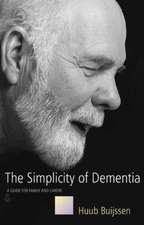Tutorials in Motor Neuroscience: NATO Science Series D:, cartea 62
Editat de Jean Requin, George E. Stelmachen Limba Engleză Hardback – 31 aug 1991
| Toate formatele și edițiile | Preț | Express |
|---|---|---|
| Paperback (1) | 2125.43 lei 6-8 săpt. | |
| SPRINGER NETHERLANDS – 5 noi 2012 | 2125.43 lei 6-8 săpt. | |
| Hardback (1) | 2134.02 lei 6-8 săpt. | |
| SPRINGER NETHERLANDS – 31 aug 1991 | 2134.02 lei 6-8 săpt. |
Din seria NATO Science Series D:
- 18%
 Preț: 1223.25 lei
Preț: 1223.25 lei -
 Preț: 399.88 lei
Preț: 399.88 lei -
 Preț: 398.74 lei
Preț: 398.74 lei - 18%
 Preț: 953.35 lei
Preț: 953.35 lei -
 Preț: 389.88 lei
Preț: 389.88 lei - 18%
 Preț: 1230.53 lei
Preț: 1230.53 lei -
 Preț: 399.29 lei
Preț: 399.29 lei - 18%
 Preț: 953.35 lei
Preț: 953.35 lei - 18%
 Preț: 1226.90 lei
Preț: 1226.90 lei - 5%
 Preț: 390.13 lei
Preț: 390.13 lei - 5%
 Preț: 370.94 lei
Preț: 370.94 lei -
 Preț: 412.95 lei
Preț: 412.95 lei - 18%
 Preț: 1224.18 lei
Preț: 1224.18 lei - 15%
 Preț: 480.20 lei
Preț: 480.20 lei -
 Preț: 412.95 lei
Preț: 412.95 lei - 18%
 Preț: 1226.73 lei
Preț: 1226.73 lei - 5%
 Preț: 2124.15 lei
Preț: 2124.15 lei - 15%
 Preț: 638.11 lei
Preț: 638.11 lei - 18%
 Preț: 1833.16 lei
Preț: 1833.16 lei -
 Preț: 401.24 lei
Preț: 401.24 lei -
 Preț: 390.84 lei
Preț: 390.84 lei - 18%
 Preț: 1237.80 lei
Preț: 1237.80 lei - 18%
 Preț: 1826.69 lei
Preț: 1826.69 lei - 18%
 Preț: 1830.34 lei
Preț: 1830.34 lei -
 Preț: 388.13 lei
Preț: 388.13 lei - 18%
 Preț: 948.47 lei
Preț: 948.47 lei - 18%
 Preț: 1835.53 lei
Preț: 1835.53 lei - 18%
 Preț: 1227.67 lei
Preț: 1227.67 lei - 18%
 Preț: 1225.79 lei
Preț: 1225.79 lei -
 Preț: 398.53 lei
Preț: 398.53 lei - 18%
 Preț: 1831.73 lei
Preț: 1831.73 lei -
 Preț: 396.24 lei
Preț: 396.24 lei - 18%
 Preț: 1661.13 lei
Preț: 1661.13 lei
Preț: 2134.02 lei
Preț vechi: 2246.34 lei
-5% Nou
Puncte Express: 3201
Preț estimativ în valută:
408.39€ • 418.23$ • 339.72£
408.39€ • 418.23$ • 339.72£
Carte tipărită la comandă
Livrare economică 19 martie-02 aprilie
Preluare comenzi: 021 569.72.76
Specificații
ISBN-13: 9780792313854
ISBN-10: 0792313852
Pagini: 672
Ilustrații: XX, 672 p.
Dimensiuni: 155 x 235 x 44 mm
Greutate: 1.17 kg
Ediția:1991
Editura: SPRINGER NETHERLANDS
Colecția Springer
Seria NATO Science Series D:
Locul publicării:Dordrecht, Netherlands
ISBN-10: 0792313852
Pagini: 672
Ilustrații: XX, 672 p.
Dimensiuni: 155 x 235 x 44 mm
Greutate: 1.17 kg
Ediția:1991
Editura: SPRINGER NETHERLANDS
Colecția Springer
Seria NATO Science Series D:
Locul publicării:Dordrecht, Netherlands
Public țintă
ResearchCuprins
Section 1: Stimulus-Response Coding.- Stimulus-response coding in four classes of stimulus-response ensembles.- The prevalence of salient-features coding in choice-reaction tasks.- Stimulus-response compatibility and psychophysiology.- Possible neural correlates for the mechanism of stimulus-response association in the monkey.- Section 2: Learning of Motor Actions.- Infant motor development: implications for motor neuroscience.- Frequent augmented feedback can degrade learning: evidence and interpretations.- There must be a catch in it somewhere !.- Bimanual movement control: dissociating the metrical and structural specifications of upper-limb movements.- The perceptual-motor workspace and the acquisition of skill.- Effect of practice on the kinematics of reaching movements made to moving targets.- Experimental studies of behavioral attractors and their evolution with learning.- Section 3: Cognitive and Neuromotor Impairments.- Basal ganglia impairment and force control.- Force amplitude and force duration in parkinsonian handwriting.- Scaling problems in Parkinson’s disease.- Coordination of reaching and grasping in prosthetic and normal limbs.- Self-induced versus reactive triggering of synchronous hand and heel movement in young and old subjects.- Section 4: Coordination of Posture and Movement.- Two modes of coordination between movement and posture.- Afferent control of posture.- The dissociation of motor sequences in controlling landing from a jump.- Section 5: Modelling Approaches to Movement Control.- Analogic and symbolic aspects in distributed motor control.- Outline for a theory of motor learning.- A quantitative model of graphic production.- On the origin of asymmetric bell-shaped velocity profiles in rapid-aimed movements.- Several effectors for a singleact: coordination and cooperation.- An intermittency mechanism for coherent and flexible brain and behavioral function.- Section 6: Programming of Movement Parameters.- Initiation and execution of movement: a unified approach.- Neural basis of movement representations.- Correlates of preparation of arm reach parameters in parietal area 7A of the cerebral cortex.- Equilibrium control vectors subserving rapid goal-directed arm movements.- Section 7: Planning of Movement Sequences.- Cognition and motor programming.- Levels of organisation and the planning of movement sequences: sequential evidence.- Structural facilitation of movement sequence planning.- Bifurcations in polyrhythmic tapping: in search of Farey principles.- Section 8: Control of Movement Kinematics.- Kinematic transformations for arm movements in three-dimensional space.- The integration of “noise” into the structure of movements.- Reaching to visual targets: coordinate systems representation in premotor and motor cortices.- Visual guidance of pointing movements: kinematic evidence for static and kinetic feedback channels.- The cortico-motor substrate for skilled movements of the primate hand.- Section 9: Control of Movement Dynamics.- The dynamic control of single joint movements.- Central and peripheral control of dynamics in finger movements and precision grip.- Central gating of myotatic responses in elbow muscles.- Human jaw motion control in mastication and speech.- Section 10: Sensory Motor Integration.- Current views on the mechanisms of eye-head coordination.- Plasticity of metrical and dynamical aspects of saccadic eye movements.- Two-dimensional control of trajectories towards unconsciously detected double step targets.- “Delayed VOR”: an assessment of vestibular memory for self motion.-Section 11: Neural Plasticity in Motor Systems.- Further considerations on the cellular mechanisms of neuronal plasticity.- Lesion-induced plasticity of the pyramidal tract during development in the cat.- On the role of the ventrolateral thalamus in motor recovery after brain damage.- Author Index.















